1. Pure sine wave output;
2. High efficiency toroidal transformer lower loss ;
3. Intelligent LCD integration display;
4. AC charge current 0-20A adjustable; battery capacity configuration more flexible;
5. Three types working modes adjustable:AC first, DC first, energy-saving mode;
6. Frequency adaptive function, adapt to different grid environments;
7. Built-in PWM or MPPT controller optional;
8. Added fault code query function,facilitate user to monitor the operation state in real time;
9. Supports diesel or gasoline generator, adapt any tough electricity situation;
10. RS485 communication port/APP optional.
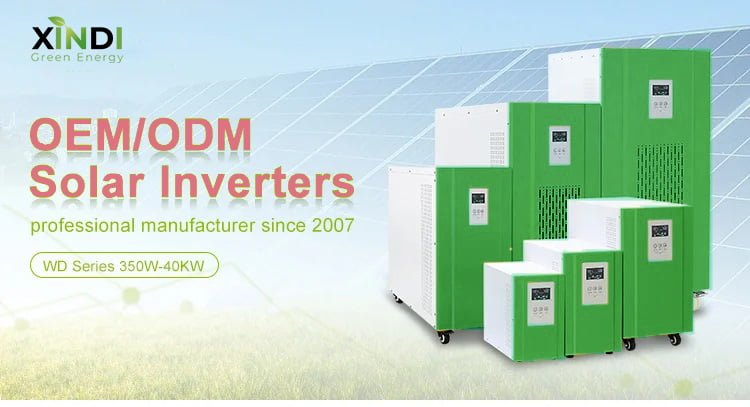
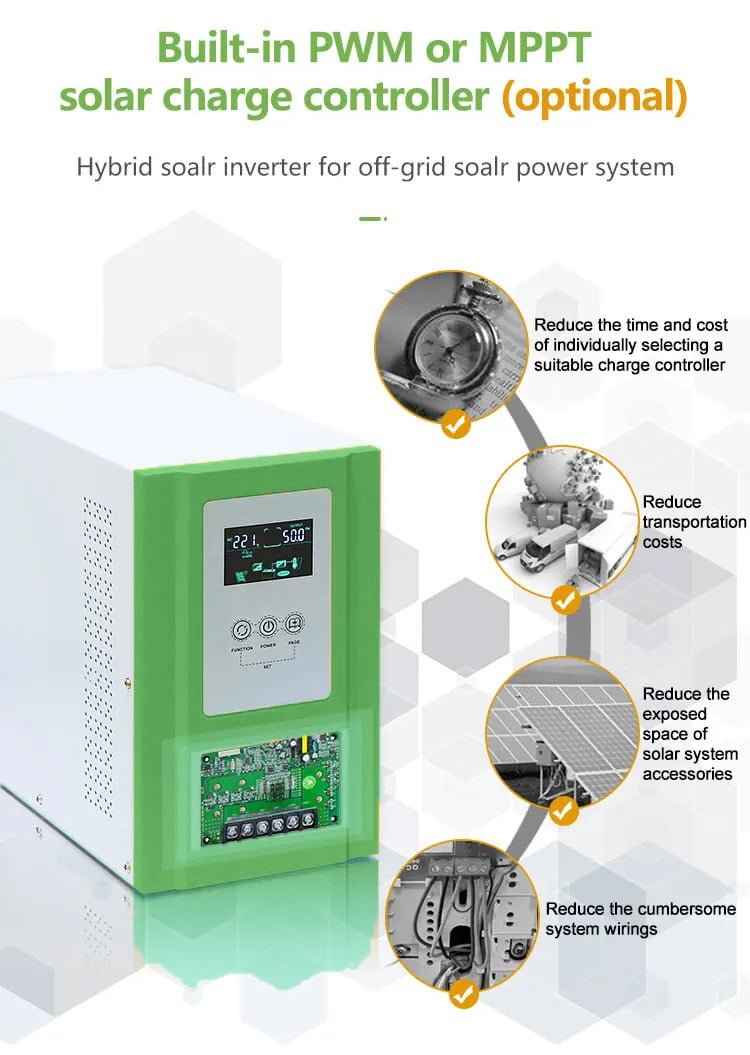
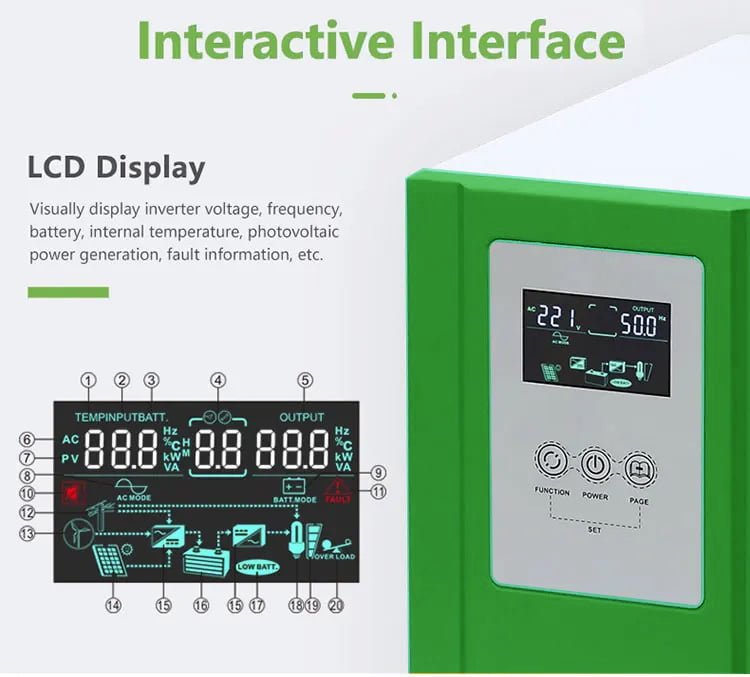
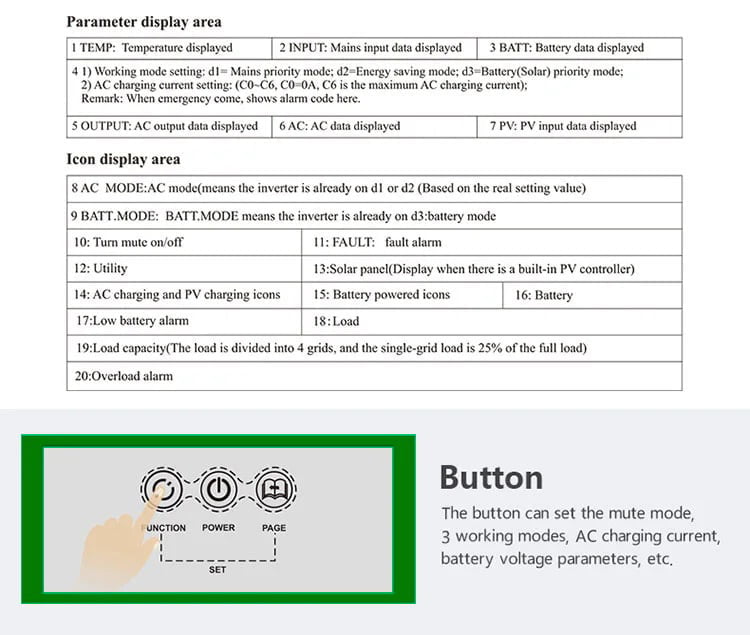
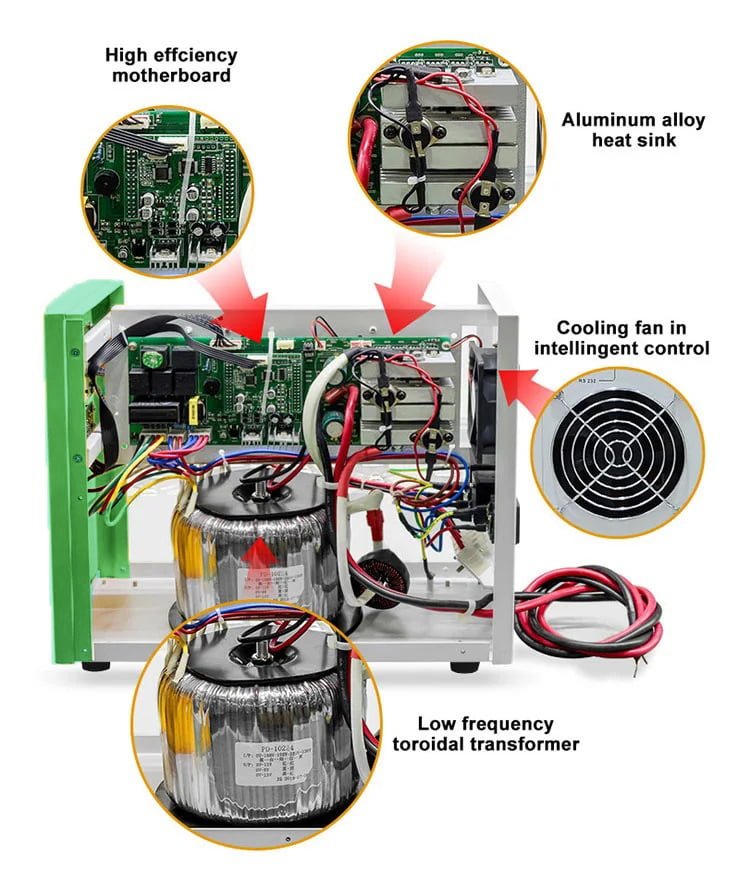


| Spezifikation | ||||
| Model WD/WD-T | 70112/24 (701) | 10212/24 (102) | 15224/48 (152) | |
| Nennleistung | 700W | 1000W | 1500W | |
| Peak Power(20ms) | 2100VA | 3000VA | 4500VA | |
| Motor starten | 0,5 PS | 1 PS | 1,5 PS | |
| Batteriespannung | 12/24 VDC | 12/24 VDC | 24/48 VDC | |
| Größe (L*B*Hmm) | 340x165x283 | |||
| Verpackungsgröße (L*B*Hmm) | 405x230x340(1pc) / 475x415x350(2pc) | |||
| NW(kg) | 9.5(1pc) | 10.5(1pc) | 11.5(1pc) | |
| GW(kg) | 11(1pc) | 12(1pc) | 13(1pc) | |
| Installationsmethode | Turm | |||
| Eingang | DC-Eingangsspannungsbereich | 10.5-15VDC(Single battery voltage) | ||
| AC-Eingangsspannungsbereich | 73VAC~138VAC(110VAC) / 83VAC~148VAC(120VAC) / 145VAC~275VAC(220VAC) / 155VAC~285VAC(230VAC) / 165VAC~295VAC( 240VAC) | |||
| AC-Eingangsfrequenzbereich | 45Hz~55Hz(50Hz)/ 55Hz~65Hz(60Hz) | |||
| Maximaler AC-Ladestrom | 0A~20A(Depending on the model,The maximum charging power is 1/4 of the rated power) | |||
| AC-Lademethode | Dreistufig (Konstantstrom, Konstantspannung, Erhaltungsladung) | |||
| Ausgang | Effizienz (Batteriemodus) | ≥85% | ||
| Ausgangsspannung (Batteriemodus) | 110VAC±2% / 120VAC±2% / 220VAC±2% / 230VAC±2% / 240VAC±2% | |||
| Ausgangsfrequenz (Batteriemodus) | 50Hz±0,5 oder 60Hz±0,5 | |||
| Ausgangswelle (Batteriemodus) | Reine Sinuswelle | |||
| Effizienz (AC-Modus) | >99% | |||
| Ausgangsspannung (AC-Modus) | 110VAC±10% / 120VAC±10% / 220VAC±10% / 230VAC±10% / 240VAC±10% | |||
| Ausgangsfrequenz (AC-Modus) | Folgen Sie der Eingabe | |||
| Verzerrung der Ausgangswellenform (Batteriemodus) | ≤3% (Lineare Last) | |||
| Kein Lastverlust (Batteriemodus) | ≤1% Nennleistung | |||
| Kein Lastverlust (AC-Modus) | ≤2% rated power( charger does not work in AC mode) | |||
| No load loss (Energy saving Mode) | ≤10W | |||
| Akku-Typ (selectable) | VRLA-Batterie | Charge Voltage :14.2V; Float Voltage:13.8V(Single battery voltage) | ||
| Akku anpassen | Lade- und Entladeparameter verschiedener Batterietypen können je nach Benutzeranforderungen angepasst werden (Lade- und Entladeparameter verschiedener Batterietypen können über das Bedienfeld eingestellt werden) | |||
| Schutz | Batterieunterspannungsalarm | Factory default: 11V(Single battery voltage) | ||
| Batterie-Unterspannungsschutz | Werkseinstellung: 10,5 V (Einzelbatteriespannung) | |||
| Batterieüberspannungsalarm | Factory default: 15V(Single battery voltage) | |||
| Batterieüberspannungsschutz | Werkseinstellung: 17 V (einzelne Batteriespannung) | |||
| Wiederherstellungsspannung bei Überspannung der Batterie | Factory default: 14.5V(Single battery voltage) | |||
| Überlastschutz | Automatischer Schutz (Batteriemodus), Schutzschalter oder Versicherung (AC-Modus) | |||
| Kurzschlussschutz am Wechselrichterausgang | Automatischer Schutz (Batteriemodus), Schutzschalter oder Versicherung (AC-Modus) | |||
| Temperaturschutz | >90°C (Ausgang abschalten) | |||
| Alarm | A | Normaler Betriebszustand, der Summer hat keinen Alarmton | ||
| B | Der Summer ertönt 4 Mal pro Sekunde bei Batterieausfall, Spannungsanomalie und Überlastschutz | |||
| C | Wenn die Maschine zum ersten Mal eingeschaltet wird, ertönt der Summer 5, wenn die Maschine normal ist | |||
| Im Inneren des Solarreglers (Optional) | Lademodus | PWM or MPPT | ||
| charging current | 10A~60A | |||
| PV-Eingangsspannungsbereich | PWM: 15V-44V(12V system); 30V-44V(24V system); 60V-88V(48V system) MPPT: 15V-120V(12V system); 30V-120V(24V system); 60V-120V(48V system) | |||
| Max. PV-Eingangsspannung (Voc) (Bei der niedrigsten Temperatur) | PWM: 50V(12V/24V system); 100V(48V system) / MPPT: 150V(12V/24V/48V system) | |||
| Maximale Leistung des PV-Arrays | 12V system: 140W(10A)/280W(20A)/420W(30A)/560W(40A)/700W(50A)/840W(60A); 24V system: 280W(10A)/560W(20A)/840W(30A)/1120W(40A)/1400W(50A)/1680W(60A); 48V system: 560W(10A)/1120W(20A)/1680W(30A)/2240W(40A)/2800W(50A)/3360W(60A) | |||
| Standby-Verlust | ≤3W | |||
| Maximale Umwandlungseffizienz | >95% | |||
| Arbeitsmodus | Batterie zuerst/Wechselstrom zuerst/Energiesparmodus | |||
| Transferzeit | ≤4ms | |||
| Anzeige | LCD | |||
| Thermische Methode | Kühlventilator mit intelligenter Steuerung | |||
| Kommunikation (optional) | RS485/APP (WIFI-Überwachung oder GPRS-Überwachung) | |||
WD series power is from 700w~40kw If you want to get more information, Please contact us | ||||
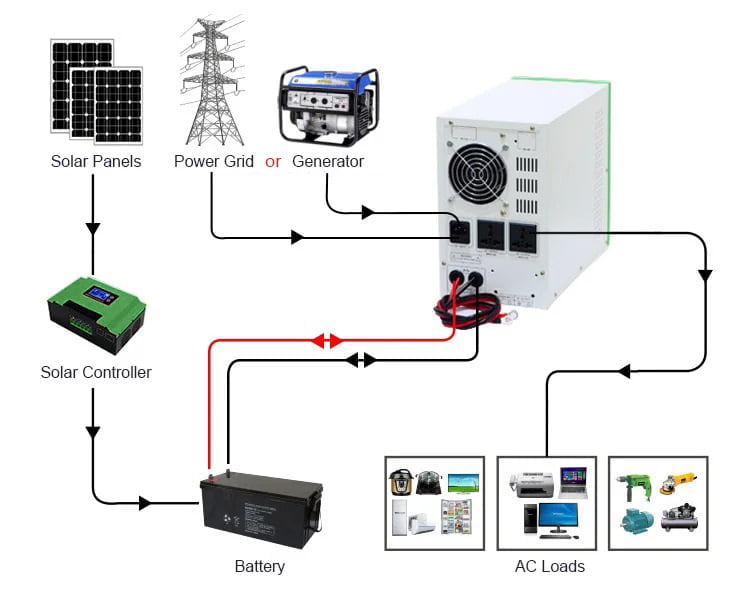
1. Battery number and capacity should be configured according to the rated voltage of the solar power system or inverter;
2. We offer 3 optional working modes:
01 Grid priority mode: When the grid and battery are connected to the inverter, grid will supply power to the loads directly after voltage being stabilized and charge batteries via inverter. When the grid is cut off, the battery will automatically continue to supply power via inverter.
02 Energy saving mode: If the power of the connected AC loads is lower than 5% of the inverter’s rated power, there will be no output from the inverter. Only the chip of inverter is working. The power consumption of the inverter is only 1~6W. The LCD shows the output voltage 0. If the power of the connected loads is over 5%, within 5S the inverter will automatically convert DC to AC to supply power for the loads . The LCD shows the output voltage.
03 Battery priority mode: When the grid and battery are connected to the inverter, battery will supply power to the loads first. When battery capacity is not enough, the grid will continue to supply power automatically.
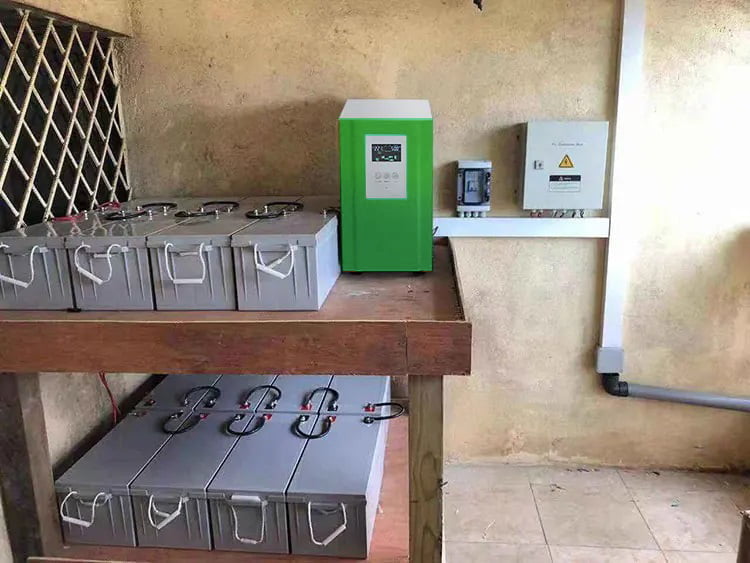
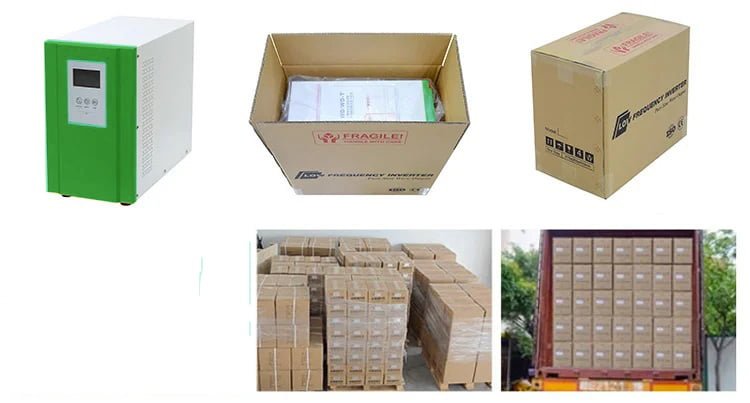
Paket
Zum Verpacken der Proben werden Kartons oder Holzkisten empfohlen, um sie beim Transport zu schützen.
Versand
1. Fedex/DHL/TNT/UPS für Proben, von Tür zu Tür.
2. Auf dem Luft- oder Seeweg für Chargenwaren, für CFL, Flughafen/Hafen-Empfang.
3. Kunden, die Spediteure oder verhandelbare Versandmethoden angeben.
4. Lieferzeit: 7 Tage für Muster; 10 bis 25 Tage für Chargenware.

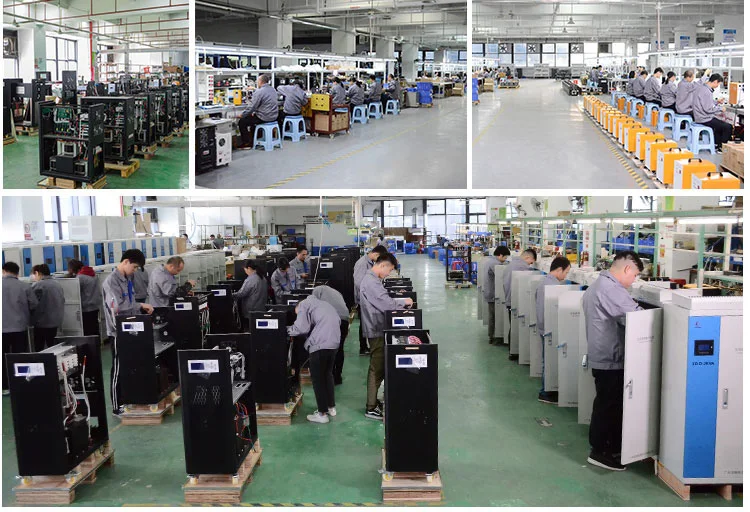
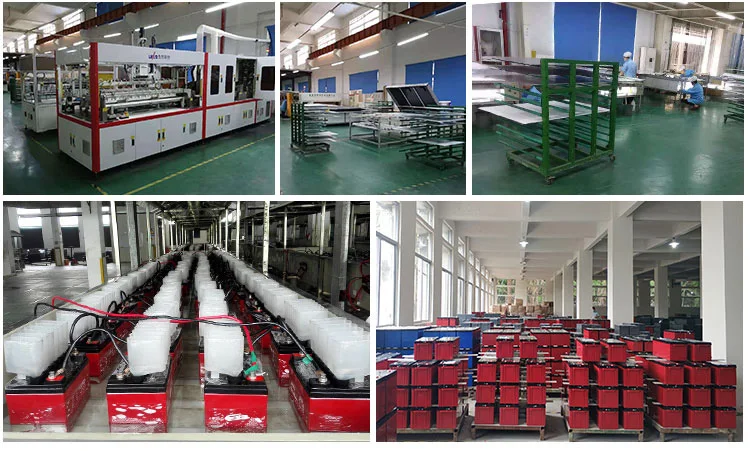

A: Are your inverters pure sine wave output?
Q: A Yes, All are true pure sine wave.
A: What kind of output you can do?
Q: Normally we produce inverter with 110V 115V 120V 220V 230V 240V, 50/60Hz self-adaption. If you have special requirements, please tell us for engineer consulting.
A: What’ s the difference between low frequency and high frequency inverter?
Q: Low frequency inverter has various protections, strong ability to adapt to the environment. more reliable, with voltage regulation.
A: What’s the difference between pure sine wave inverter and modified sine wave inverter?
Q: Pure sine wave output inverter is just as good as the Public power grid. Even better. Low repaired rate, long lifespan, Without harmonic pollution, enviromental-friendly and appliances protected.
Modified sine wave output has a negative impact on appliances and can’t load inductive load, such as air contition, refrigerator and etc. Certain motor control circuits don’t like the modified wave.
A: What appliances your inverters can load?
Q: Our inverter can be used in household, Office, agricultural appliances and other inductive load such as refrigerator, air conditioner, water pump, etc.
A: Can you print our company logo on inverters, nameplates and packaging?
Q: Yes, we accept OEM orders.
A: How to choose a right inverter?
Q: Tell us your demand, then our sales will recommend a suitable inverter to you.
A: How to solve the technical problem?
Q: 24 hours after-service consultancy just for you and to make your problem to solveeasily.
A: Do I Need A Power Inverter?
Q: Actually, no. This is the only component of a solar energy system that is not absolutely required. However, if you don’t use one, you will not have 220 or 230 volts AC and will have use battery power alone. This might be acceptable in a small RV or cabin, but most people want to use normal AC appliances.
A: What’s The Difference Between 12, 24, And 48 Volt Inverters?
Q: This refers to the input voltage from the battery bank. The main consideration is that at higher voltages the current is less so that you can use smaller wires between your solar panel array and your battery bank. Of course, when you decide on a system voltage, the Solar Panels, Inverter, and Battery Bank all need to use the same voltage.
A: What to do if the product is broken?
Q: If any product is faulty, you can send the picture or video to us, we sill study it and supply the spare parts of PCB board free for after sale service.



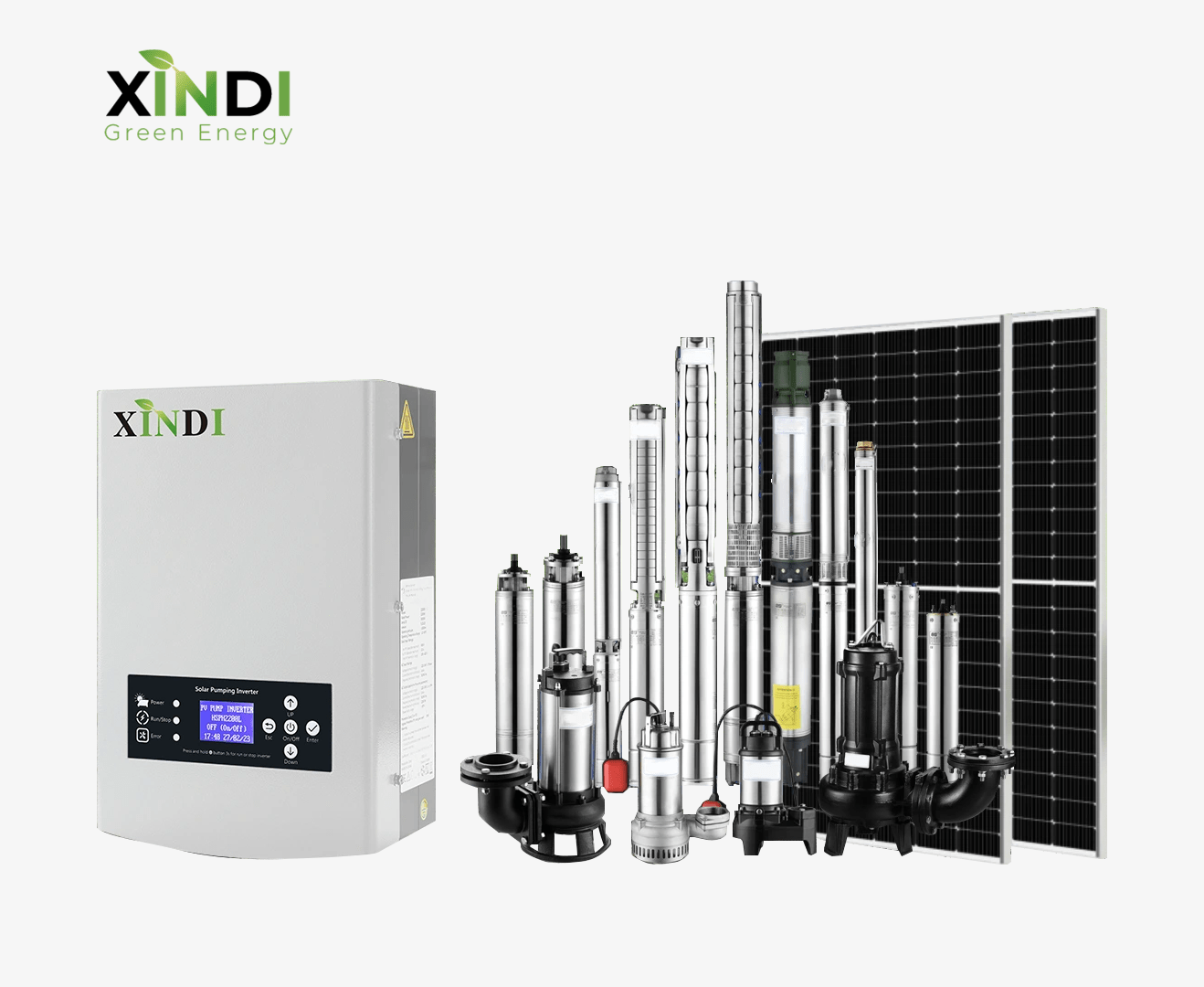
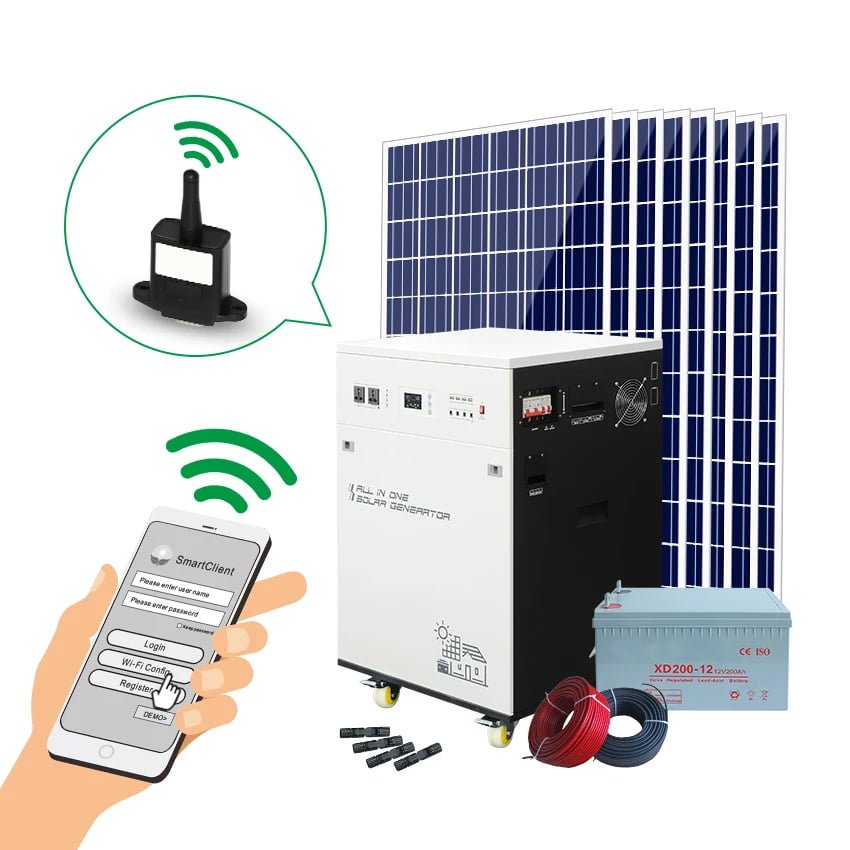
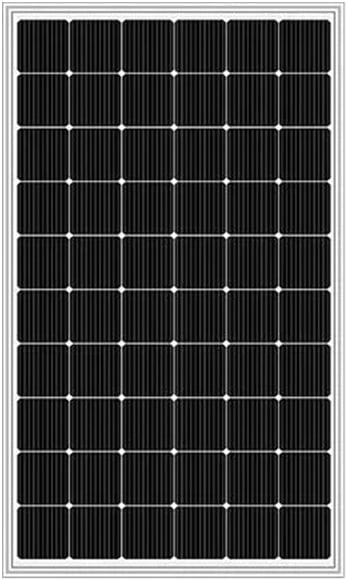
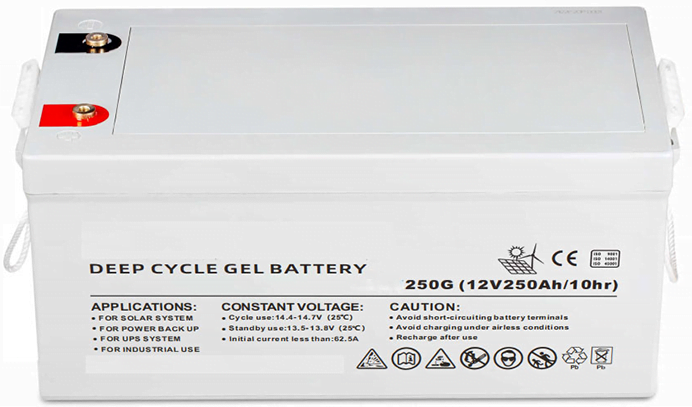
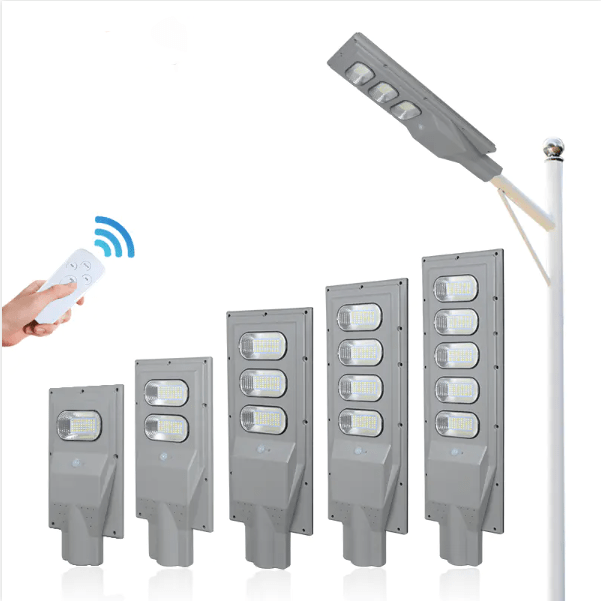
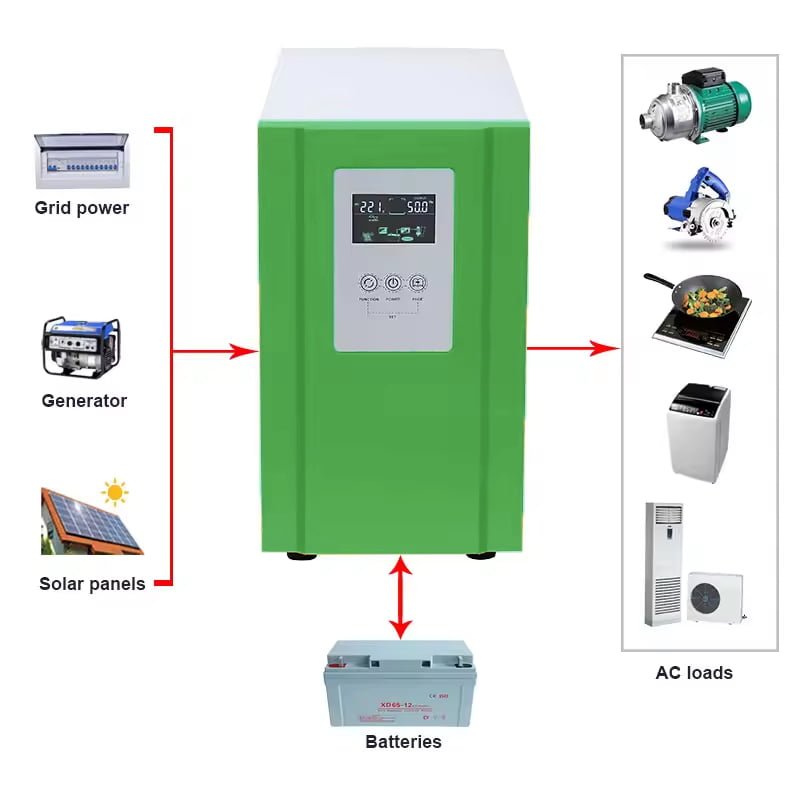
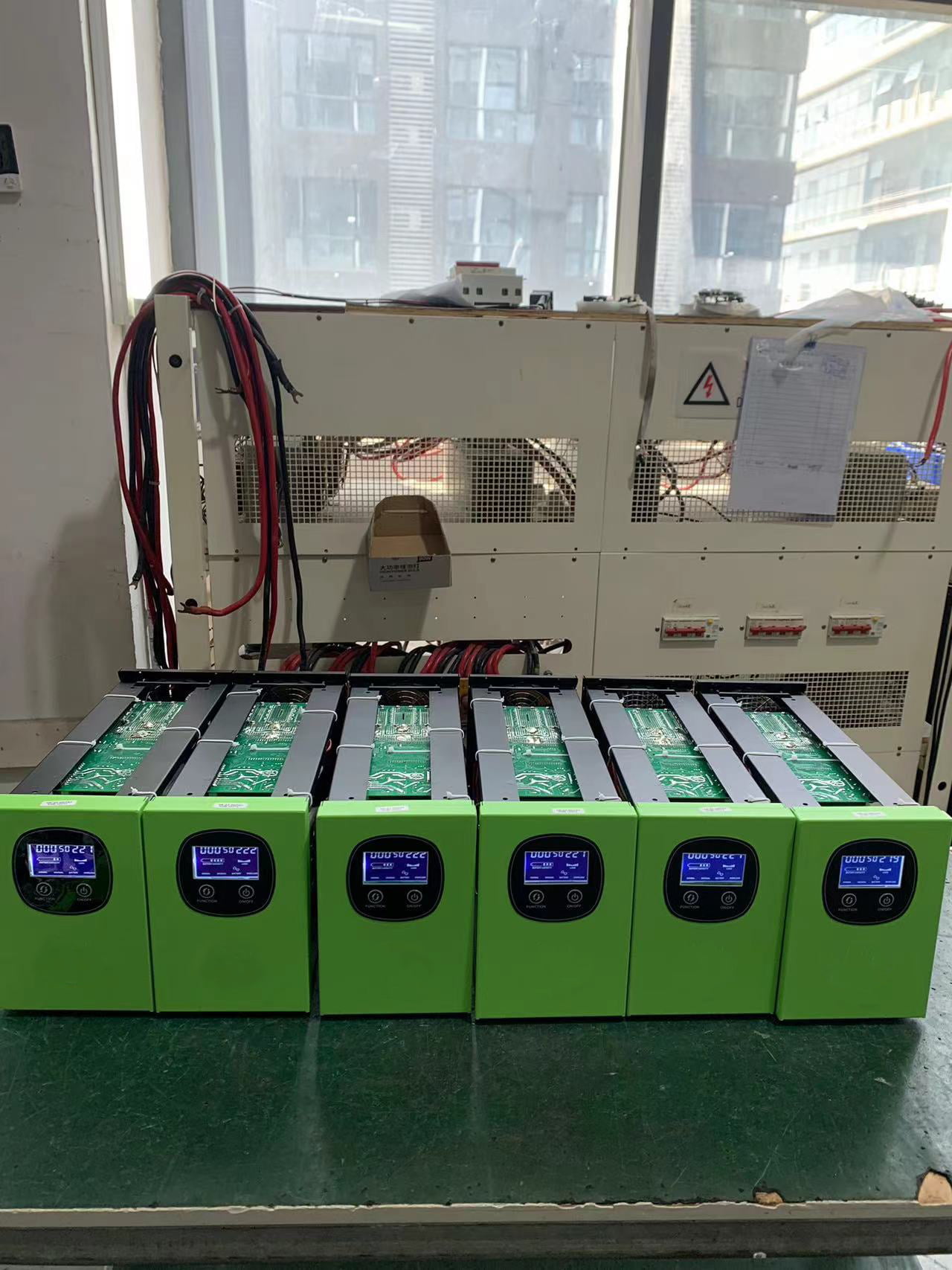
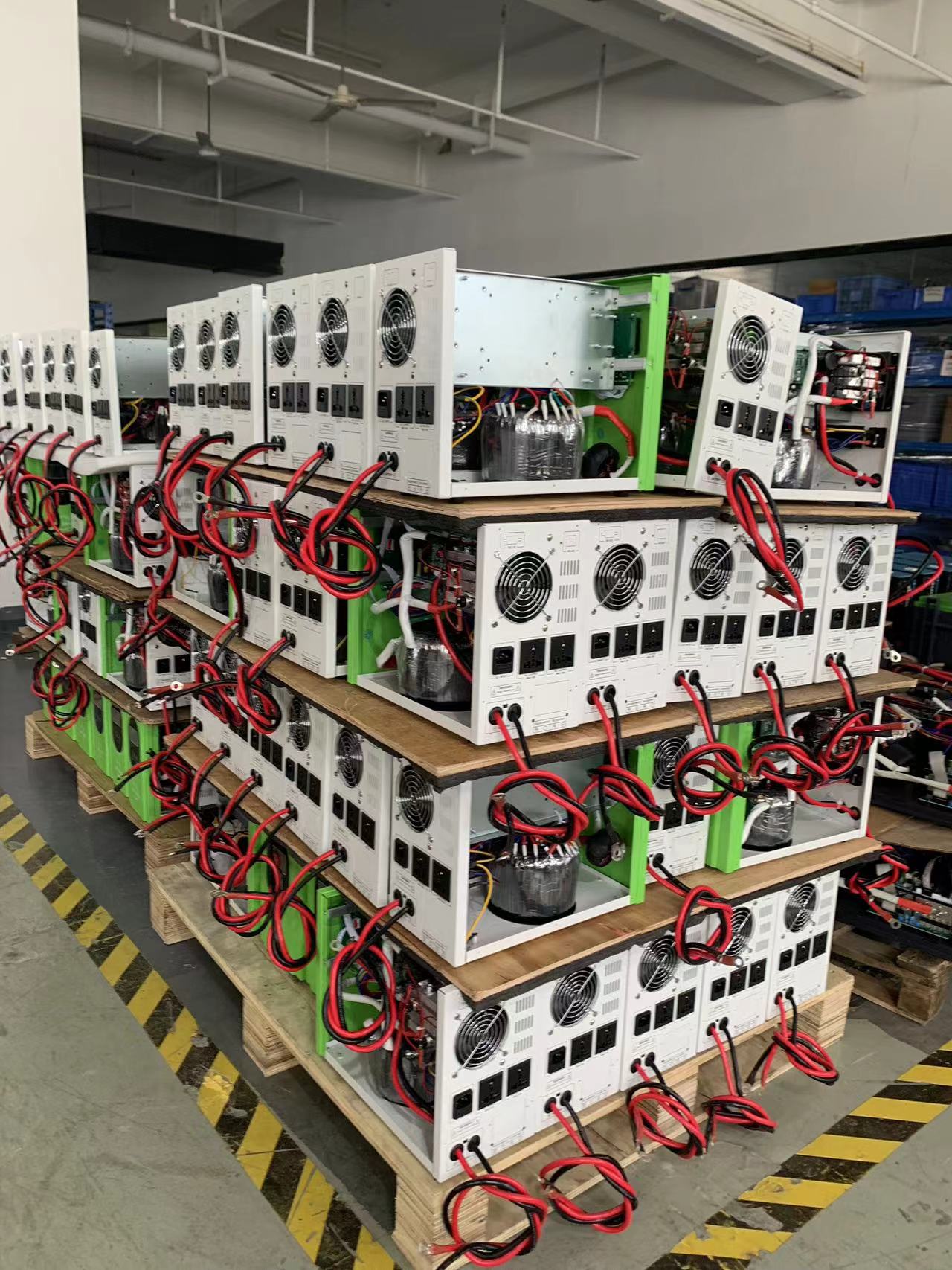
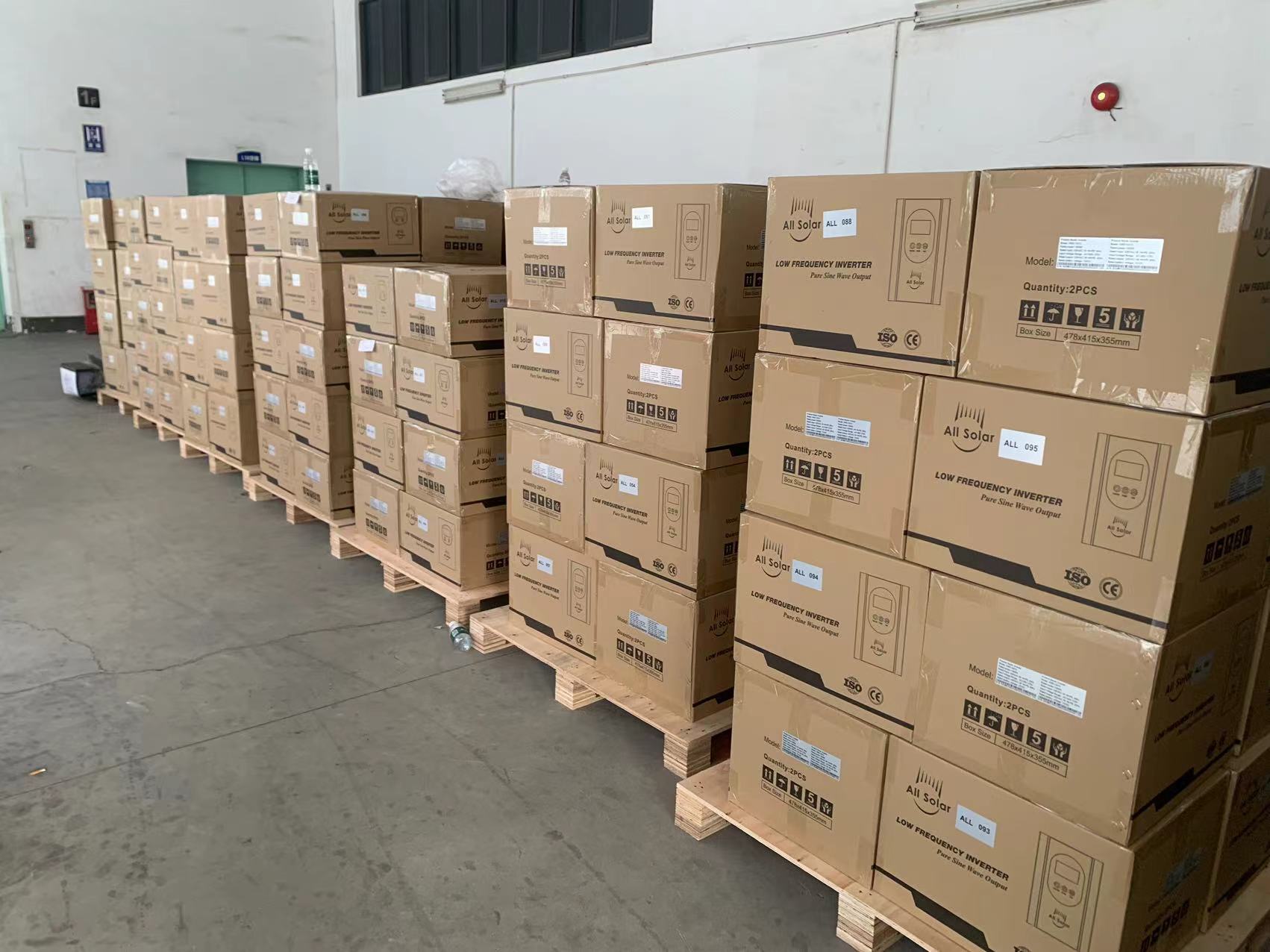
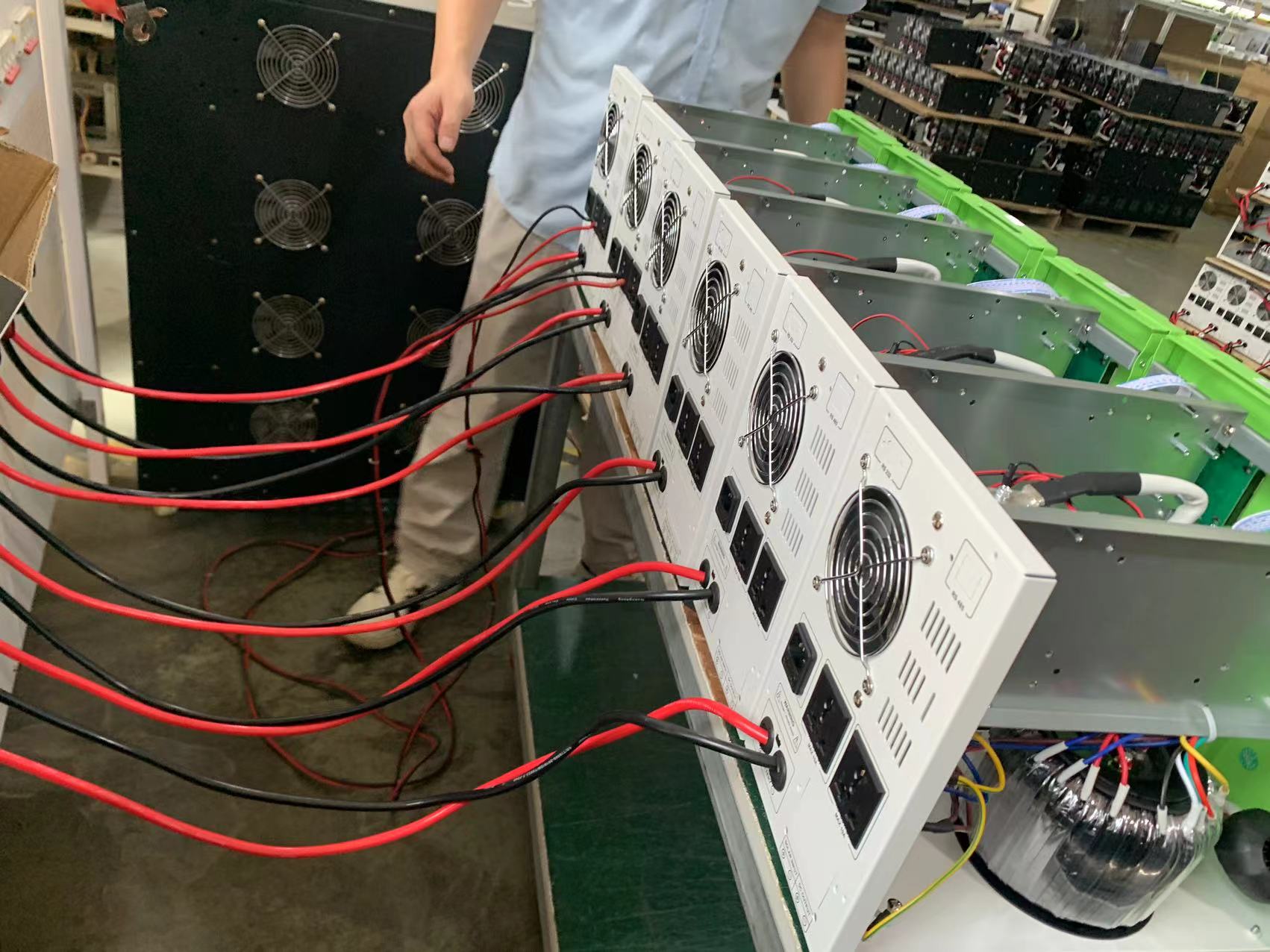
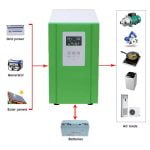
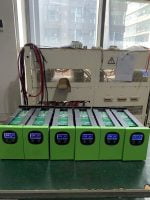
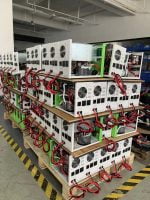
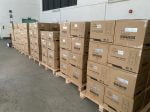
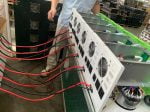

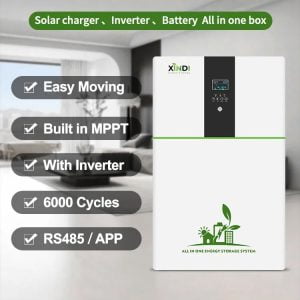
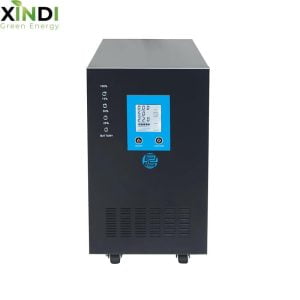
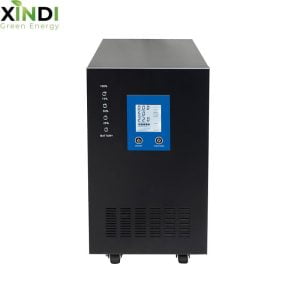
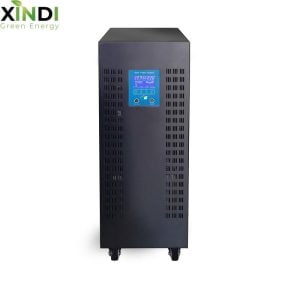
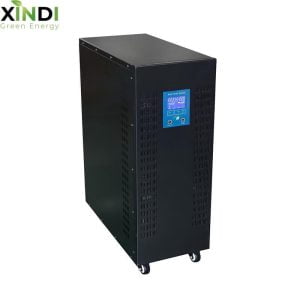
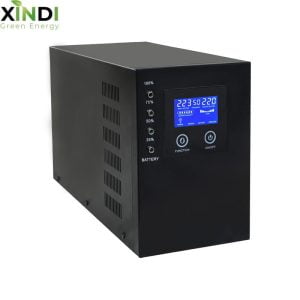
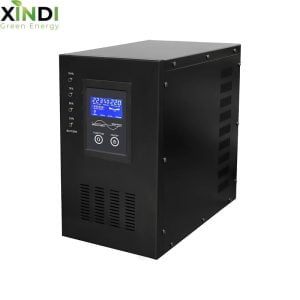

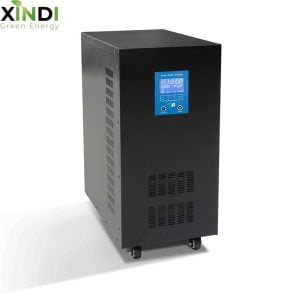


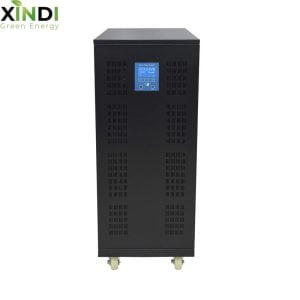
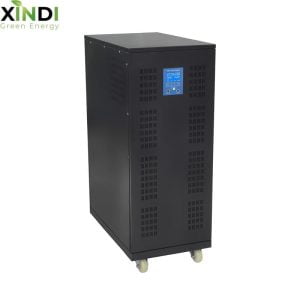
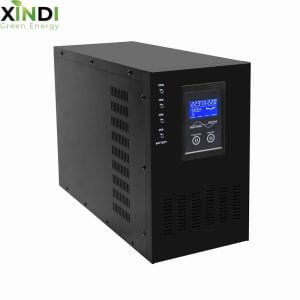
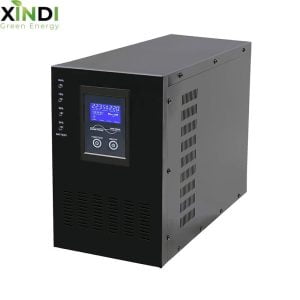
Rezensionen
Es liegen noch keine Bewertungen vor.